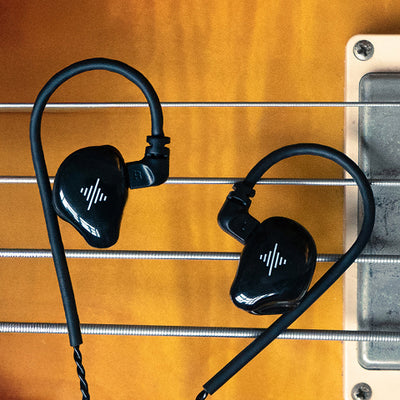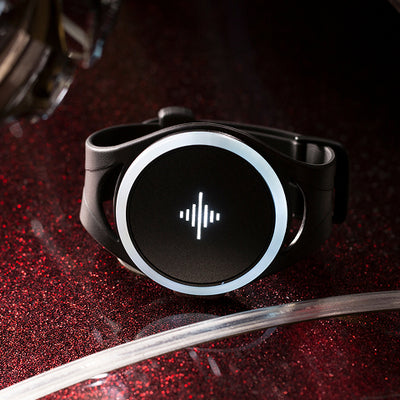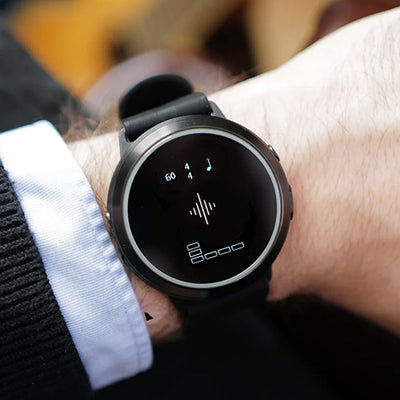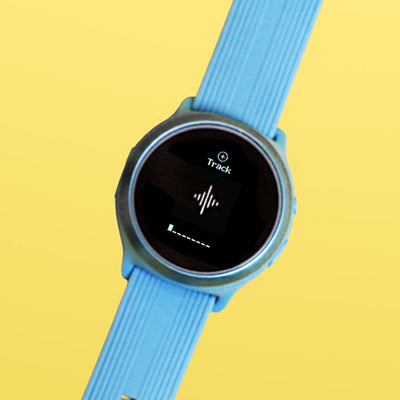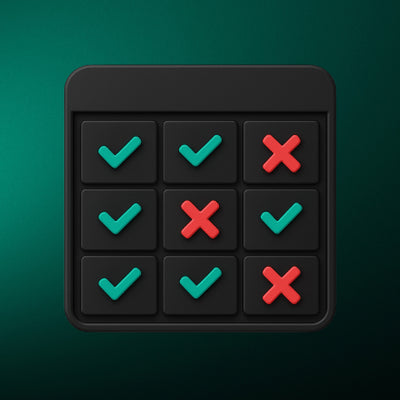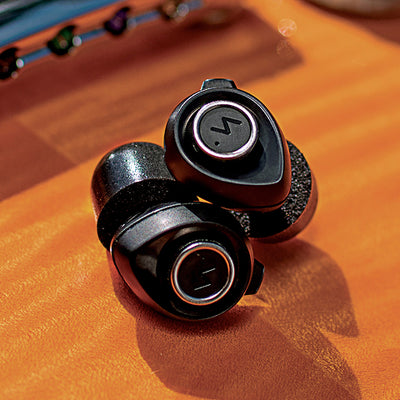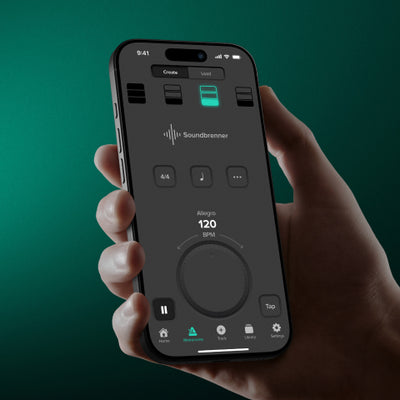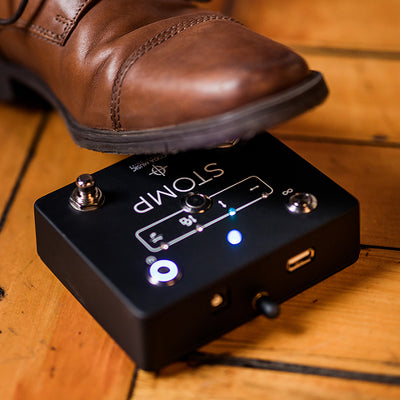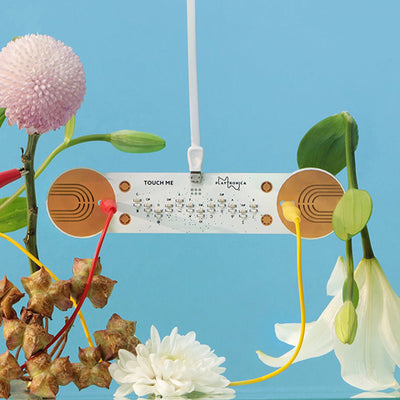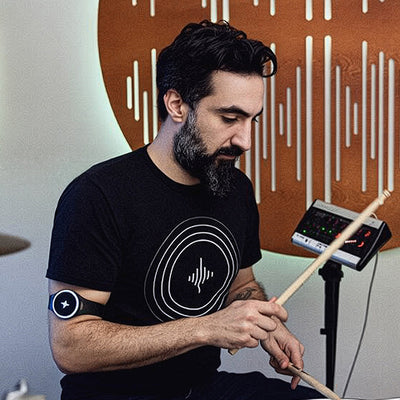Blog6 min read
The spookiest notes in music
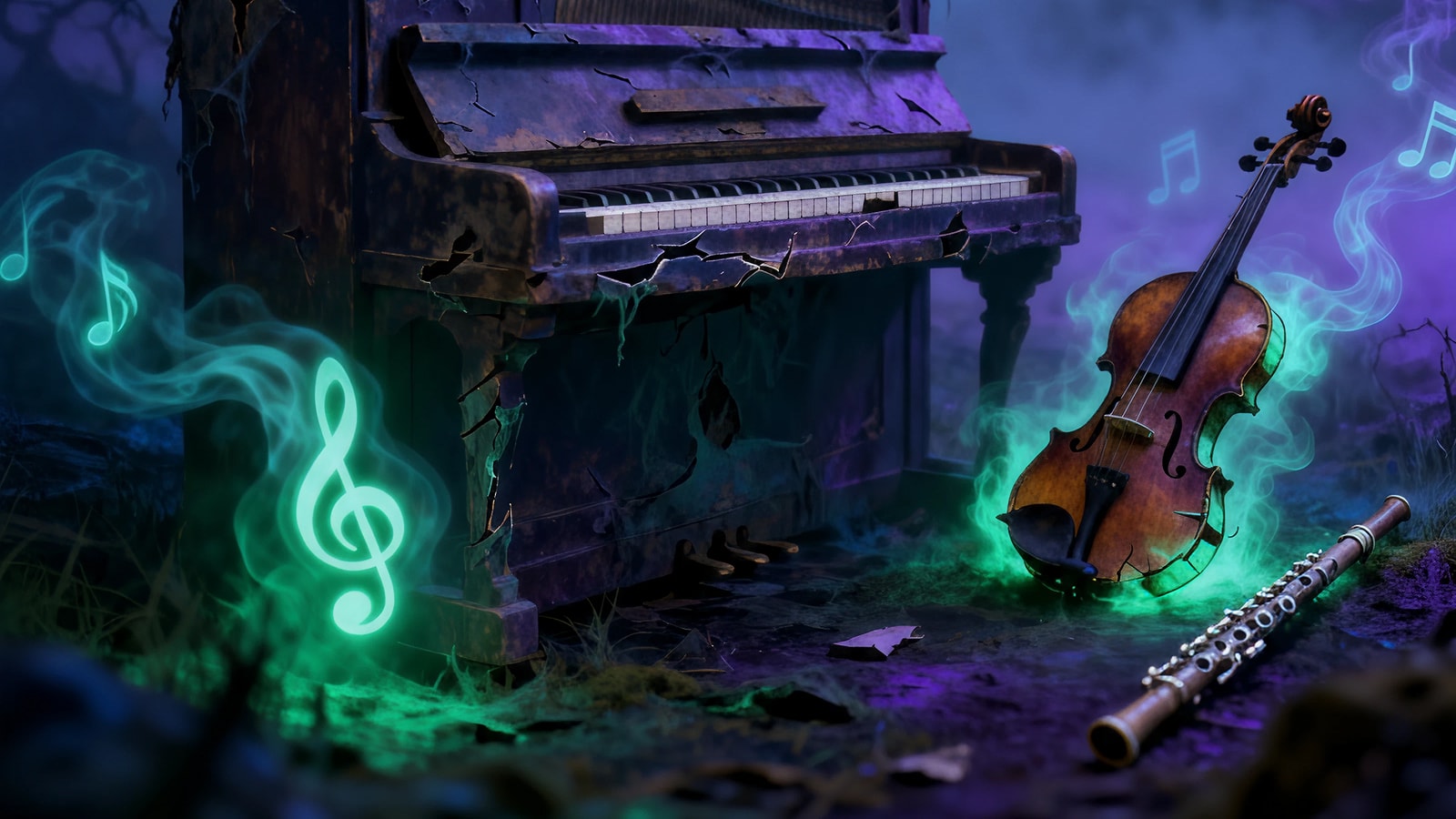
Ghost notes and how they'll haunt your playing
As Halloween approaches, there's no better time to explore one of music's most mysteriously powerful techniques: ghost notes. These ethereal musical elements aren't just spooky in name - they're the invisible force that can transform your playing from good to absolutely haunting.
What are ghost notes?
Despite their name, ghost notes are very much alive in modern music. A ghost note is a musical note with rhythmic value but no discernible pitch when played. Think of them as the musical equivalent of a poltergeist - you can't quite hear them clearly, but you definitely feel their presence.
On drums, ghost notes are played as very soft snare strokes between the main accents. For guitarists and bassists, they're created by playing muted strings—striking dampened strings to create percussive sounds without clear pitch.
The genius of ghost notes lies in their subtlety. They add rhythmic context and groovewithout overwhelming the main elements. It's like having a musical phantom that enhances everything while staying mysteriously in the background.
Why ghost notes matter
The groove factor
Ghost notes separate mechanical playing from music that makes people move. They fill spaces between main beats, creating what musicians call "the pocket"—that magical zone where rhythm becomes irresistible.
Dynamic control
Playing ghost notes requires mastering different dynamic levels, immediately improving your overall musical expression. You're creating layers of sound that give your playing depth and character.

Mastering ghost notes by instrument
Drums: Foundation of feel
Ghost notes are typically played on the snare drum between backbeats. The technique involves light tapping with minimal wrist movement, hitting slightly off-center to reduce volume. Start with a basic rock beat, then add soft ghost notes between beats 2 and 4.
Bass guitar: Percussive foundation
Bass players create ghost notes by muting strings with their fretting hand while plucking normally. This technique, popularized by legends like Jaco Pastorius, is essential in funk, R&B, and modern pop.
Guitar: Adding percussive color
Guitarists use techniques like "chicken picking" or percussive strumming with muted strings to create rhythmic punctuation.
How Soundbrenner tools enhance ghost note practice
Feel the beat with vibrating metronomes
Traditional audible metronomes can interfere with your ability to develop ghost notes properly. The Soundbrenner Pulse and Core 2 use powerful vibrations (7 times stronger than a smartphone) to help you feel the beat instead of hearing it.
This is crucial for ghost note development because:
-
Your ears stay free to focus on ghost note dynamics without click track interference
-
Haptic feedback connects with the physical nature of ghost note technique
-
Subdivision awareness improves as you feel exactly where ghost notes should fall

Perfect your sound with Wave in-ear monitors
Ghost notes require incredible dynamic control and precise listening. The Soundbrenner Wave in-ear monitors let you hear every nuance with their balanced frequency response and up to 36dB of noise isolation.
With the Wave IEMs, you can:
-
Hear subtle dynamics clearly, including soft ghost note attacks
-
Practice with precision in any environment
-
Monitor your development as you incorporate ghost notes into your playing
Quick ghost note exercises
Beginner workout
-
Single ghost isolation: Play one ghost note between each main beat
-
Ghost note scales: Alternate between fretted notes and ghost notes
-
Dynamic contrast: Practice ghost notes before and after accented notes
Intermediate level
-
16th note patterns: Fill subdivisions with combinations of accents and ghost notes
-
Cross-limb coordination: Maintain independence while adding ghost notes
-
Melodic integration: Use ghost notes as pickup notes leading into chord tones
Common mistakes to avoid
Playing too loud
Ghost notes should enhance groove subtly, not compete with main elements. If people consciously hear your ghost notes, they're probably too loud.
Poor timing
Ghost notes need rhythmic precision even when dynamically soft. Use your Soundbrenner metronome to feel subdivisions while keeping ghost notes locked in time.
Overuse
Ghost notes are seasoning, not the main course. Use them strategically to enhance musical phrases.
Genre applications
Funk and R&B: Essential for characteristic "bounce" and groove
Rock and pop: Subtle use for percussive strumming and sophisticated drum beats
Jazz: Creates swing feel and rhythmic sophistication
Country: "Chicken picking" relies on ghost notes for percussive attack

Embrace the spook
Ghost notes represent the difference between playing notes and making music. They're mysterious, powerful, and once you start using them, they'll haunt your playing in the best possible way.
This Halloween season, master the art of ghost notes and watch as your playing develops supernatural power to captivate listeners. With Soundbrenner's vibrating metronomes and precision in-ear monitors, you'll have everything needed to feel the beat, hear the details, and develop ghost note technique that elevates your musicianship to haunting new heights.
Remember: the best ghost notes are felt rather than heard. So silence the click, feel the beat, and let your ghost notes add that mysterious magic that transforms good playing into something truly spellbinding.
Ready to start your ghost note journey? Check out Soundbrenner's complete range of musician tools designed to help you feel the beat and hear every detail of your playing.














